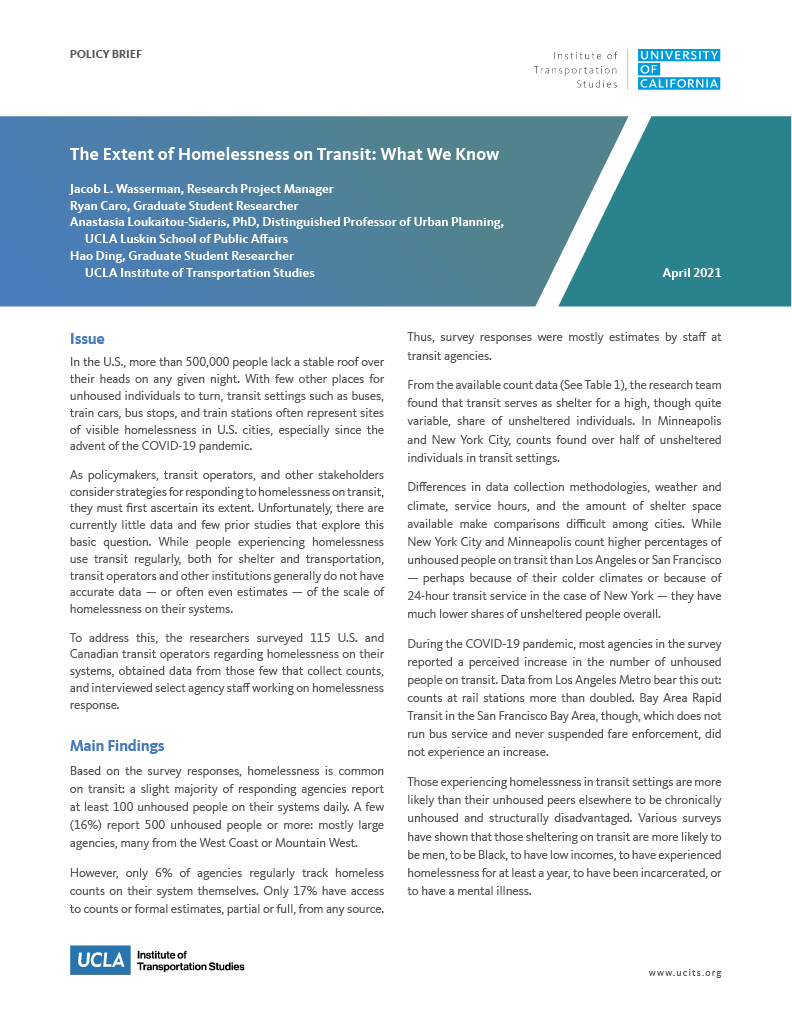Date: April 30, 2021
Author(s): Jacob L. Wasserman, Ryan Caro, Anastasia Loukaitou-Sideris, Hao Ding
Abstract
In the U.S., more than 500,000 people lack a stable roof over their heads on any given night. With few other places for unhoused individuals to turn, transit settings such as buses, train cars, bus stops, and train stations often represent sites of visible homelessness in U.S. cities, especially since the advent of the COVID-19 pandemic. The scale of homelessness in transit systems is not well understood. Our study surveyed 115 U.S. and Canadian transit operators and found that most operators report at least 100 unhoused people on their systems daily. However, only 6% of agencies regularly track homeless counts on their system themselves, and only 17% have access to counts or formal estimates, partial or full, from any source. Differences in data collection methodologies make comparisons difficult among cities. Longitudinal data collected at regular intervals with consistent methodology can help agencies to understand if new challenges are arising or if outreach is working and can enable data-driven policymaking.
About the Project
More than half a million individuals experience homelessness every night in the U.S. With the scale of the crisis often surpassing the capacities of existing safety nets — all the more so since the onset of the COVID-19 pandemic — many turn to transit vehicles, stops, and stations for shelter. Many also use transit to reach destinations such as workplaces, shelters, and community service centers. This project investigates the intersections of the pandemic, transit, and homelessness; the scale of homelessness on transit; and how transit agencies are responding to the problem. All told, centering the mobility and wellbeing of unhoused riders fits within transit’s social service role and is important to improving outcomes for them and for all riders.


